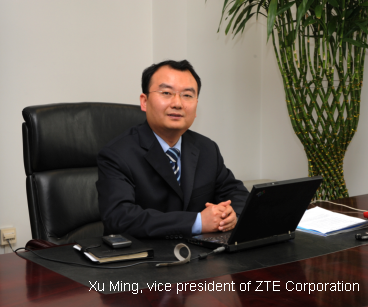Using SDN for Better IP RAN O&M
 Software-defined networking (SDN) addresses many issues in traditional network architecture by decoupling network control and forwarding. SDN has shaken up the networking business, with most vendors either announcing or releasing SDN-related products. ZTE launched its IP RAN SDN system at MWC 2015. This was the first time ZTE’s IP RAN SDN solution had been demonstrated and publicized. ZTE Technologies interviewed Xu Ming, vice president of ZTE Corporation, who talked about using SDN to better operate and manage IP RAN in the face of increasing mobile broadband workloads.
Software-defined networking (SDN) addresses many issues in traditional network architecture by decoupling network control and forwarding. SDN has shaken up the networking business, with most vendors either announcing or releasing SDN-related products. ZTE launched its IP RAN SDN system at MWC 2015. This was the first time ZTE’s IP RAN SDN solution had been demonstrated and publicized. ZTE Technologies interviewed Xu Ming, vice president of ZTE Corporation, who talked about using SDN to better operate and manage IP RAN in the face of increasing mobile broadband workloads.
A: We think SDN is developing in three steps, and in each one, ZTE is focused on digging up value for the customer. In the first step, the commercial value lies in using SDN architecture and technology to improve network service. SDN can be introduced to solve issues with existing network technologies. The network can be reconstructed to meet more service needs. SDN also simplifies network O&M. In the second step, SDN architecture and technology is used for service fulfillment. SDN can tightly couple services with networks, further open network capabilities, and speed up service innovation and deployment. In the third step, SDN architecture and technology can be used to increase network value and build an SDN ecosystem.
A: ZTE has built up three basic platforms: an open application-development platform, a controller platform, and an integrated hardware platform. These are the foundation of our development. ZTE’s SDN-based bearer network is evolving towards application in the mobile backhaul, service control layer, optical transport layer, and IDC.
A: In the first step, ZTE has launched commercial solutions for improving network service capability. These solutions include v-IP RAN, SPTN, SDN-based optical network, SDN-based BNG, and SDN-based data center. v-IP RAN aims to simplify O&M and improve network service capability. SPTN helps operators with cross-domain service provisioning. SDN controllers are used for fast, easy, end-to-end service provisioning. An SDN-based optical network can improve operational efficiency. SDN controllers are used for centralized connection control and optimized traffic flow. Changes are made to the existing network in the early stage. This greatly increases network efficiency and helps an operator obtain higher ROI. An SDN-based BNG with NFV applications reduces investment in equipment at the service-control layer. The separation of service control from equipment greatly lowers capex and the requirements on equipment. An SDN-based data center solution comprises data center interconnection (DCI) and internal data center network. The DCI optimally schedules traffic between data centers via SDN controllers, and the internal data center network uses SDN controllers to control bearer equipment and virtual servers. This enables traffic within the data center to be balanced, service capabilities to be developed, and ROI to be increased.
A: LTE networks are being widely commercialized, and massive base stations have been deployed. This means the number of devices at the access layer of a mobile backhaul network has increased dramatically. Also, as L3 nodes are moved downward to the access layer, network management has become more difficult. There are unprecedented challenges related to bearer networks. ZTE’s IP RAN SDN solution introduces SDN architecture and virtualization technology. SDN controllers unify the management of devices at both the access and aggregation layers. A huge number of devices at the remote access layer are virtualized into the boards of aggregation equipment for better management. This significantly reduces the number of IP RAN network elements and simplifies network structure and O&M. We have also developed O&M apps with graphic user interfaces and released PC, PAD and mobile phone versions. Easy one-key operation has completely changed O&M.
A: ZTE is being proactive in commercializing its SDN-based bearer networks. We have had in-depth exchanges on SDN and commercially trialed SDN for operators around the world. In China, we have established a strategic SDN partnership with China Unicom and have trialed commercial v-IP RAN for Jiangsu Telecom and Zhejiang Telecom. We have run six SDON commercial trials in Africa, South America and Southeast Asia; two vBAS commercial trials in Southeast Asia; and several IDC trials in Africa, America, Europe and Southeast Asia. We have also signed strategic cooperation agreements with MTOs.
We have built three basic platforms: an open application-development platform, a controller platform, and an integrated hardware platform. Using the app development platform, we have developed a series of apps in different scenarios for improving network service capability. In the future, we will provide an open app development platform for a third party. On the open platform, developers can develop their own apps to enrich the upper-layer applications. We will also offer a universal hardware platform to third parties and joint together with all partners in the industry to build a new vibrant SDN ecosystem.